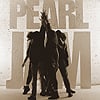Need Help with Chord Progressions
 Jam10
Posts: 654
Jam10
Posts: 654
Anybody have any advice on chord progressions. What I mean by that is.....I know that certain chords sound good together and some don't just from experimenting with different chords but is there a proper formula or rule of thumb when it comes to making up proper chord progressions? I have heard of the 1,4,5 or the 1,6,7 but I have no idea what that means. Is there a different formula for major chords as opposed to minor chords? Can anybody please explain that to me as detailed as possible. I am trying to understand the theory behind it so my song writing can come much easier and make sense to me. Thanks for taking the time to read this thread, any help would be greatly appreciated!
Post edited by Unknown User on
0
Comments
Say the Key is C Major. Here are your chords I thru VII
I. C Major
II. D Minor
III. E Minor
IV. F Major
V. G Major
VI. A minor
VII. B diminished
So the I, IV, V of is playing the progression G Major, C Major, D Major
The I, VI, VII is G Major, E Minor, F Diminished
There is somewhat of a formula for this. If the key is a Major key, say A, you start with A and go through each note of the A Maj scale and add a major or minor next to it.
A Maj
B Min
C# Min
D Maj
E Maj
F# Min
Ab Dim
Major Key: Major Minor Minor Major Major Minor Diminished
Minor Key: Minor Major Major Minor Minor Major Diminished
I'm pretty sure the Minor part is just the opposite. So remember, if the key is Major: 1 Majors, 2 Minors, 2 Majors, 1 Minor, Diminished is the order for the chords of major scale. It is the exact opposite for a minor scale.
7/9/06 LA 1
7/10/06 LA 2
10/21/06 Bridge 1
This way you don't need to remember as much music theory.
An easy example would be C-Major (no sharps or flats) so the scale is C-D-E-F-G-A-B-C.
Building triads on this is simple using every other note (all 7 of these chords work together).
C-D-E-F-G-A-B-C
C-E-G= C Maj
D-F-A= D Min
E-G-B= E Min
F-A-C= F Maj
G-B-D= G Maj
A-C-E= A Min
B-D-F= B Min
So basically learn you key signatures to create a scale, and then you can make chords accordingly.
Here's some things to print (I give these to my students):
Key Signatures (what's sharp or flat)
CHORD EXPLINATION (a guide on how to form chords)
Cheers . . .
- Ian C.T. vom Saal
<b><font color="red">CONTACT ME HERE</font>: www.myspace.com/ianvomsaal</b>
♫ ♫ ♫ ♫ ♫ ♫ ♫ ♫ ♫ ♫ ♫ ♫ ♫ ♫ ♫ ♫ ♫ ♫ ♫ ♫ ♫ ♫ ♫ ♫ ♫ ♫ ♫ ♫